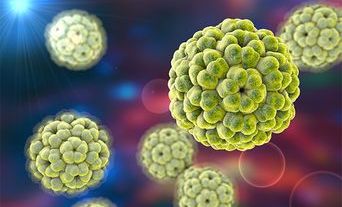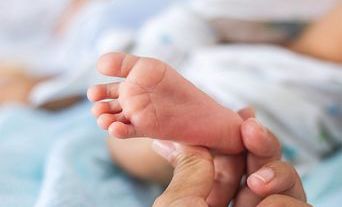I decided to specialise in immunology during my medical undergraduate studies between 1967 and 1972. During this time the nature and identity of an immunologically competent cell was being intensely debated; lymphocytes were considered to be metabolically inactive as they did not have structures like the endoplasmic reticulum contained within their cytoplasm, unlike plasma cells. During my academic and clinical training in immunology spanning 1984 to 1997, I was able to observe seminal progress in understanding the physiology and pathophysiology of disorders of the immune system and their therapies.
Below is my personal account of scientific and translational advances in the field of clinical immunology that I observed. Although this article focuses on contributions made within the UK, advances in clinical science and clinical practice only happen because of contributions from clinicians and scientists on a global scale.
Immunoglobulin and immunodeficiency
It was during his time working at the National Institute for Medical Research, Mill Hill, and Oxford that Professor Rodney Porter helped to elucidate the chemical structure of immunoglobulin molecules, for which he shared the Nobel Prize in Physiology and Medicine in 1972.1 Professor Porter’s work on immunoglobulin was essential in unlocking our understanding of this key component of the immune system.
The era of recognition and diagnosis of immunodeficiency states and therapeutic discoveries began in the 1950s, when it was discovered that immunoglobulins reside in the gamma-globulin fraction using serum protein electrophoresis.2 US Army Colonel, Ogden Bruton, hypothesised that patients with recurrent infections should have elevated immunoglobulin levels. He was surprised to find that gamma-globulin was absent in a boy he looked after who had recurrent infections, especially with encapsulated bacteria. He correctly concluded that the absence of gamma-globulin was the root cause of his recurrent infections, and used subcutaneous injections of gamma-globulin (separated from plasma as per Edwin Cohn3 ) to treat this first patient diagnosed with agammaglobulinemia.4 In this case, a 16% preparation of gamma-globulin was administered subcutaneously. Detectable levels were found in the patient’s serum one week later and some were detectable for almost 50 days thereafter.
Following the publication in 1969 of the groundbreaking study carried out by the Medical Research Council (MRC) on the role of immunoglobulin replacement in the treatment of hypogammaglobulinemia,5 there was an incremental increase in the clinical use of immunoglobulin. Immunoglobulin was fractionated from the blood of normal donors, initially for replacement therapy, and then increasingly for immunomodulatory therapy of autoimmune diseases. Indeed, it is one of the main therapeutic tools used for the management of COVID vaccine-induced thrombocytopenia.
With the onset of the COVID-19 pandemic, there was an understandable reduction in plasma collections, which are required to produce immunoglobulin concentrates. Combined with the increase in global demand, this resulted in a shortage of immunoglobulin concentrates available for patient treatment in the UK.
Professor Porter’s work on immunoglobulin was essential in unlocking our understanding of this key component of the immune system.
The role of UK research
UK researchers played a key role in developing reliable methods for the accurate and reproducible measurement of serum immunoglobulins, as highlighted later.
The seminal study by MRC on patients with primary hypogammaglobulinaemia collected information from 176 patients between 1956 and 1966, showing that patients had serum IgG levels of less than 200 mg/100 ml.5 Chairman of the MRC working party was Professor JR Squire6 who was Professor of Experimental Pathology, Birmingham. After he died suddenly, the Chairmanship of the working party was taken over by Professor PL Mollison.7 Patients were administered weekly intramuscular injections of immunoglobulin (25 mg/kg body weight), which significantly reduced bacterial infections. This landmark publication provided the first evidence base for the treatment of patients with hypogammaglobulinaemia with immunoglobulin replacement therapy (by an intramuscular route).
In 1970, the Department of Health and Social Security in London and the Welsh office of the NHS published a memorandum announcing the establishment of two centres for the diagnosis and treatment of patients with hypogammaglobulinemia in the UK.
A meeting was held at the East Birmingham hospital (currently Heartlands Hospital) on Monday 10 November 1969 to discuss the delivery of services to patients with hypogammaglobulinaemia.
An appendix to this meeting includes a letter to Dr Ronald Thompson enumerating the equipment and budget that would be available to him to set up diagnostic laboratory for hypogammaglobulinemia in Birmingham – this was a princely sum of £2,000. The intramuscular immunoglobulin administered to patients was produced by the Elstree laboratory, which was managed by the Lister Institute of Preventative Medicine (University of London). This intramuscular immunoglobulin was distributed to the two centres and stored in a cold room, prior to being regularly posted to individual patients.
I can personally confirm that a key task allocated to the Senior Registrar in Immunology at East Birmingham Hospital was to maintain a card index of all UK patients with hypogammaglobulinemia living north of Watford. The index included the dose of immunoglobulin for each patient, the amount supplied and when the supply was likely to run out, to ensure the patient received additional immunoglobulin in time. The senior registrar had to package and post the required immunoglobulin to the patients.
Using this patient base, a prospective study of cancer in patients with hypogammaglobulinaemia was conducted by Dr David Webster and Professor John Soothill, and led by Dr Ronald Thompson. Julian Peto provided the statistical analysis of this data and the study was published in The Lancet in 1985.8 It established that patients with primary hypogammaglobulinemia had an increased incidence of non-Hodgkin’s lymphoma, as well as stomach cancer.
Between 1980 and 1985 Charlie Janeway and Hans Ochs in the USA pioneered the introduction of intravenous preparations of immunoglobulin to provide replacement immunoglobulin therapy for patients with hypogammaglobulinemia patients.9
The next major advancement that improved the quality of life of patients with antibody deficiency was the development of patient self-administered home therapy by Professor Helen Chapel, an immunologist, and Victoria Brennan, an immunology specialist nurse. This was the first time that patient self-administered treatment of hypogammaglobulinemia was used anywhere in the world.10
It established that patients with primary hypogammaglobulinemia had an increased incidence of non-Hodgkin’s lymphoma, as well as stomach cancer.
Biological safety of immunoglobulin preparations
Care of patients with hypogammaglobulinemia was punctuated by the transmission of hepatitis C between 1983 and 1994.11 The outbreaks were in the UK, Sweden, several other European countries and the USA.12 Following these outbreaks and root cause analysis, critical requirements of good manufacturing practice in the manufacture of immunoglobulin products and the importance of good record-keeping were highlighted. Professor Chapel was again a pioneer in developing and publicising these requirements.13
In 1996, Dr Peng Lee Yap, a clinical immunologist attached to the National Blood Transfusion Service in Edinburgh, analysed patients who developed non-A, non-B hepatitis following administration of intravenous immunoglobulin.11 This analysis showed that the non-A, non-B hepatitis was caused by the hepatitis C virus and the addition of virus inactivation steps, such as solvent detergent treatment or incubation at an acid pH, during the manufacture of immunoglobulin would inactivate the virus. As a result, there was a huge improvement in the safety of immunoglobulin preparations, testified by the fact that since the early 1990s, there have been no further outbreaks of immunoglobulin-transmitted viral infections globally.
In 1991, a group of Swedish clinicians published a study showing that subcutaneous immunoglobulin administered by rapid infusion using a pump could be successfully used to treat patients with hypogammaglobulinemia at home.14 A later study published in 2000 involving patients from the UK and Sweden provided evidence for the comparable efficacy of subcutaneous replacement therapy for hypogammaglobulinemia. It demonstrated that subcutaneous therapy was as effective as intravenous therapy in preventing infection.15 Following this and similar studies carried out globally, subcutaneous immunoglobulin was established as the preferred method of delivery of immunoglobulin replacement therapy for patients with primary antibody deficiency.
Other notable landmarks in antibody deficiency
here have been many other important breakthroughs in the diagnosis, management and understanding of the pathogenesis of antibody deficiency by researchers in the UK. Some of these are listed below.
- The Department of Biological Standards at Mill Hill played a key role in the preparation and acceptance of the first international reference standard for immunoglobulin measurement.16
- In MRC trials on non-Hodgkin’s lymphoma and myelomatosis led by principal investigator Professor Ian MacLennan, Oxford and Birmingham, B-cell malignancies (e.g. non Hodgkin’s lymphoma and chronic lymphocytic leukaemia) were identified as major causes of secondary antibody deficiency and other conditions associated with failure of antibody responses to encapsulated bacteria.17
- In 1994, the first consensus document on the diagnosis and management of patients with antibody deficiency was published, which was led by Professor Helen Chapel and sponsored by the Royal College of Pathologists.18
- The development of an immunoglobulin demand management scheme by the NHS in England and Scotland.
- Professor Helen Chapel led a key publication supporting the optimisation of replacement immunoglobulin doses to individual patients with primary antibody deficiency.19
- Research carried out by the Great Ormond Street Hospital immunology service contributed to the first molecular identification of two primary antibody deficiencies, namely X-linked antibody deficiency20 and X-linked hyper-IgM syndrome (CD40-ligand deficiency).21
- The elucidation by Professor Ian MacLennan and colleagues that CD40/CD40 ligand interactions in the germinal centre are critical for B memory cell generation, immunoglobulin class switching and affinity maturation.22
- The development of monoclonal antibodies to identify and measure IgG subclasses by Professor Roy Jefferies and Dr Noel Ling in Birmingham.23



